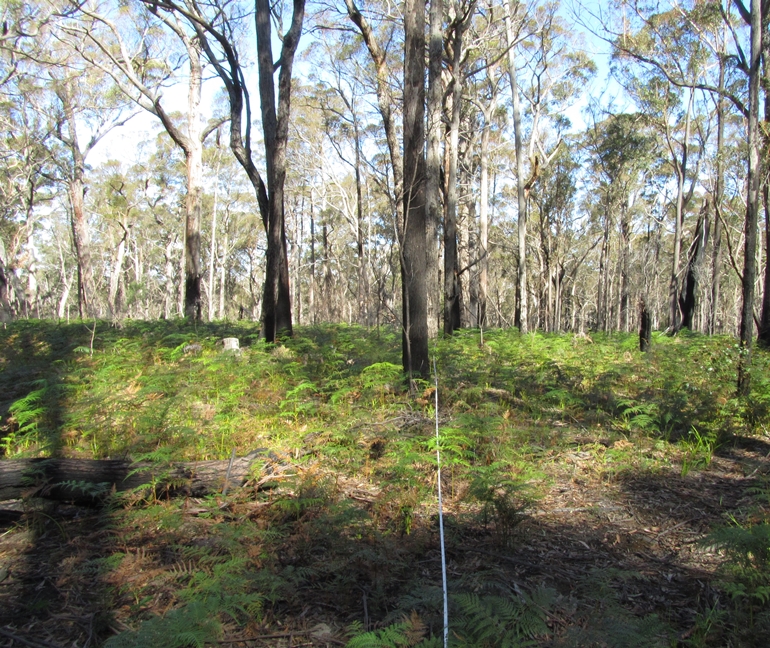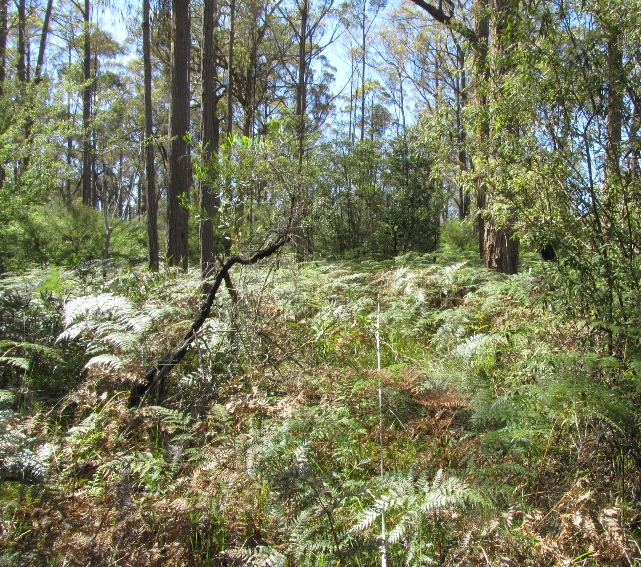The foothill forests of Victoria are the State's most extensive and are subject to great variation in fire regimes. The complex nature of the interactions between fire and biodiversity means that there is much to learn to continually improve fire management. The ARI fire ecology retrospective study aimed to assess how past fires have influenced the present occurrence and abundance of plants and animals in foothill forests of East Gippsland. This knowledge will contribute to the planning of prescribed burns, including appropriate fire intervals to maintain species populations.
Key fire variables that were investigated include:
- time since last fire
- number of fires recorded since 1970
Some initial results for plants in relation to the fire variables were:
- shrubs which are killed by fire and that produce seed quickly and have soil-stored seed (e.g. Acacias) were most common at recently burnt sites.
- rhizomatous plants which vigorously resprout after fire (e.g. Austral Bracken and Forest Wire-Grass) were more common at sites where there had been high fire frequency.
These results contribute to information about how changes in fire frequency may lead to changes in dominance of particular plant life forms.
The retrospective project was conducted in partnership with the Hawkeye monitoring project and was funded by the DELWP Fire Division through its Landscape Fire and Environmental Monitoring Program.


For more information contact: annette.muir@delwp.vic.gov.au
The following report provides details on the study and its outcomes:
Page last updated: 28/03/25